Ancient town Muziris in Kerala – finally lost and found
For hundreds and even thousands of years there was a so called Muziris town mentioned over and over again in many letters, trade agreements and other documents.
But after the devastating floods of Periyar in 1341, people did not know its precise location.
All we knew was it was situated on the Periyar delta and it used to be one of the most important ports trading spices, diamonds, pearls and semi-precious stones at that time and thus connected to almost 32 countries in the world.
Muziris in Kerala was lost and finally found after more than 6 centuries just recently when a few years ago a couple of ancient objects appeared. It all started in 1983 with some Roman coins found close to Pattanam village. However, it was not until 2006 and 2007 when the archaeologists started with the first excavations around the coast in this area.
Some historians agree, some disagree with the fact that Pattanam situated just 28 km North from Cochi was the original location of Muziris port.
However, the archaeological excavations prove that Pattanam was a Roman port operating already in the 10th century BC, that’s for sure. If it was THE port once called Muziris remains a mystery. No matter what, it is a place of high historic value.
We were lucky enough to take a 2-hour boat ride straight from the Brunton Boatyard hotel where I was staying to get around the ancient city which, like mentioned above, was once called Muziris.
Although when you mention Muziris name to many locals, they will not know what you are talking about. And the foreigners even less.
However, Muziris is an important place for Kerala, indeed. In the present there’s just a few things to look at but all of huge historical importance.
In the morning I was exhausted and it was a hard work trying to stay awake on the boat. Exploring Kerala has been pretty difficult because I did not have enough time to catch up with sleep. But the second half of the trip I was completely awake, was looking out of the window at all the fishing nets around the coast, small huts and some locals.
Then, the other half of our group on the second boat decided to have a sort of a party on the way so they were dancing and singing and sending us the videos on Whatsapp so I had to laugh. It was so cool and peaceful to observe their boat behind us with all the water birds around! We even managed to open a window on top to take photos and videos from their boat.
Once we reached Muziris, we all (especially us girls, as usual) ran to the closest bathroom which was just behind the corner in the Synagogue. Afterwards, we were taken around the white building of the Paravur Jewish Synagogue, which is one of the only existing 6 synagogues in Kerala nowadays. There used to be 12 of them but unfortunately half were destroyed. Maybe that is also the reason why the synagogue was declared a protected monument in 1996 and then restored in 2010 – 2012.
On top floor up to 100 people could fit in case of a flood so the history would not repeat itself. Back in time the area around the Synagogue was once flooded and all the things disappeared under water. Just a few years ago copper plates, pottery and parts of buildings were excavated close by. 2 out of 3 copper plates have been saved, unfortunately one was lost.
Did you know that women had a special outside door to climb up to the women’s gallery – a prayer room where men could not enter?
After the inside tour, I also took a quick barefoot walk around the two buildings and found not only a jack fruit tree, but a few old Jewish graves as well right behind the Synagogue.
Nowadays, the market close to which the Synagogue was constructed still operates twice a week.
After a walk around the Synagogue and photos of the huge jackfruit a few metres from the entrance, it was time to put our flip flops on again and head off on the bus to the Paliam Kovilakam Palace where women were not allowed to enter back in days.
The most interesting things I found there were wooden doors inside the thick walls so the people could escape from torture.
I was also amazed by the very beautiful terracota ceiling on the top floor which was reconstructed according to the original. The Golden statue, objects used for elephants and many others are now exposed here. Our guide also showed us an agreement from the 18th century written on papyrus paper. For an unknown reason I felt a strong connection when strolling around the Palace. So peaceful!
The Palace was built in such a way it is not hot inside. How clever! White walls and brown wooden window shades were making the building look very stylish; simple elegance I’d say.
After the barefoot Palace visit and Kerala Kalaripayattu martial arts movie, I simply had to take a photo at one of the three funny old toilet floors outside of the Palace.
Then we hopped on the boats again to go to the Vedic Village hotel for spicy lunch.
With full stomachs we took our boats again, this time to the Kottapuram fort ruins dating back to approx. 1550.
Part of the fort overlooking the sea was built in the 17th century during the Dutch domination. The back storage with a door where I took a photo, was excavated first in May 2010 when the excavation started as part of the Muziris Heritage Project. Since then around 50,000 artifacts were found here which will form part of the Museum exhibition that is about to be opened in the area soon.
Up to 14 fort steps were excavated, and also 2 cadavers. One of them was now covered with blue plastic so we didn’t have a chance to see it. The cadaver is supposed to be of a young Portuguese man from around 1540. Wow, what a shame it was all covered! And the second one was not here any more. Would be very interesting to be able to have a look at such an old cadaver from so close, don’t you think?
The Kottapuram fort was a protected area for many years which contributed to its conservation. The very first excavation was in 2007 but just one building was excavated at that time. The remaining ruins we can see now were excavated between 2010 and 2014.
”I loved the location overlooking the sea surrounded by palm trees. I can easily imagine living in the fort in such a pretty place centuries ago. If only it was less hot and humid here!” I remember telling my friend when leaving.
First, we hopped on our beautiful bus and very soon passed outside of the blue-walled Cheraman Juman Masjid Mosque which was the first mosque built in the area. The latest research says it was first constructed in the 10th century but unfortunately the mosque we see now is not the original building.
I will always remember the town which is full of one of my favorite trees – Banyan trees from focus family called after the Banyan tribe to which belonged also Mahatma Gandhi. The trees give even more of a special feeling to this ancient place.
Once we reached a narrow street, we had to take a few rickshaws to take us to the Pattanam archaeological office where we took seats on the floor to watch a short documentary about Muziris in Kerala. I learned that many European, African and Asian objects were found here 1 to 4 metres under the surface; such as popular objects, a mummified canoe, Tamil-Brahmi scripts, botanical material (they were exchanging medicinal plants in the past) and gold ornaments from Spain, Greece, France, Tunisia, Jordan, Turkey and Southern Italy. One of the most precious ones was the Fortuna Goddess carved in stone.
More Muziris photos:
After a hot tiring day we all moved to the Cherai Beach Resort where I shared a room with my sweet friend Mica from Senyorita.net. A really nice sunset greeted us at the beach, and then even a nicer dinner.
Many people are not really into history. And I am neither. But when I was a kid, I wanted to be an archaeologist (not only a model, weird, right?) Maybe that’s why I found it beyond interesting to visit the place that most probably was once the famous ancient town of Muziris in Kerala.
Paying a visit to Muziris in Kerala was made possible thanks to the Kerala Tourism.












































































































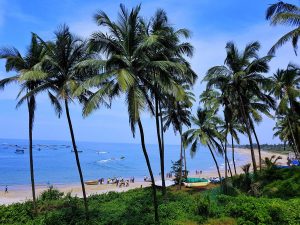
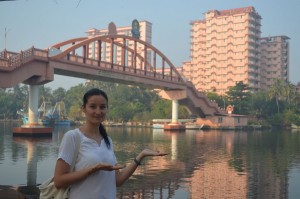
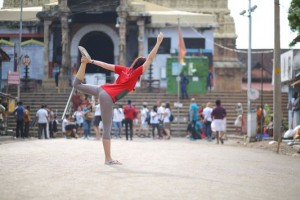
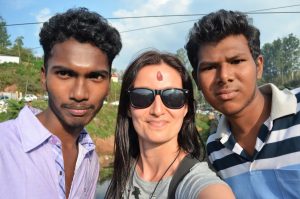
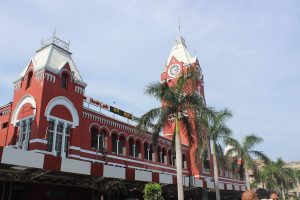
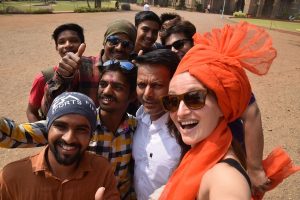
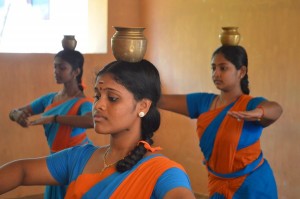
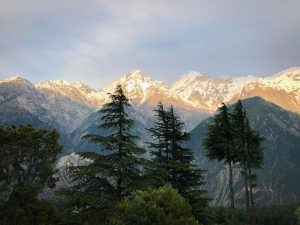

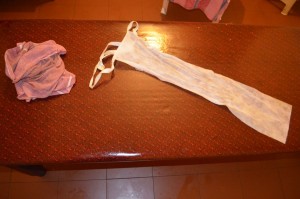
Crazy Sexy Fun Traveler
| #
Comment@ Tom:
I love to give a lot of info whenever I know it :)
Micamyx|Senyorita
| #
I admire how detailed you wrote this post, Alex! :D Muziris is very interesting, although I have to admit that during the tour, I wasn’t feeling well mainly because of the hot and humid weather. I feel guilty feeling tired that day (with all the traveling). If i have another chance, I’d love to explore this place again. Nice one, darling!
Crazy Sexy Fun Traveler
| #
Thanks so much. I was also exhausted on that day but thankully till enjoyed our Muziris visit just because I am really into ruins and old buildings :)
Tom
| #
A very educational post with some fantastic pics. It looks like you had a great time, and brought home some special memories. Thanks for sharing.
Crazy Sexy Fun Traveler
| #
Comment@ m k mathai:
Thanks so much, I really appreciate your comments :) This is my job so I gotta write. I was also taking some notes while there to remember the details.
m k mathai
| #
what a thorough work. so authentic and exhaustive. how do u find the time